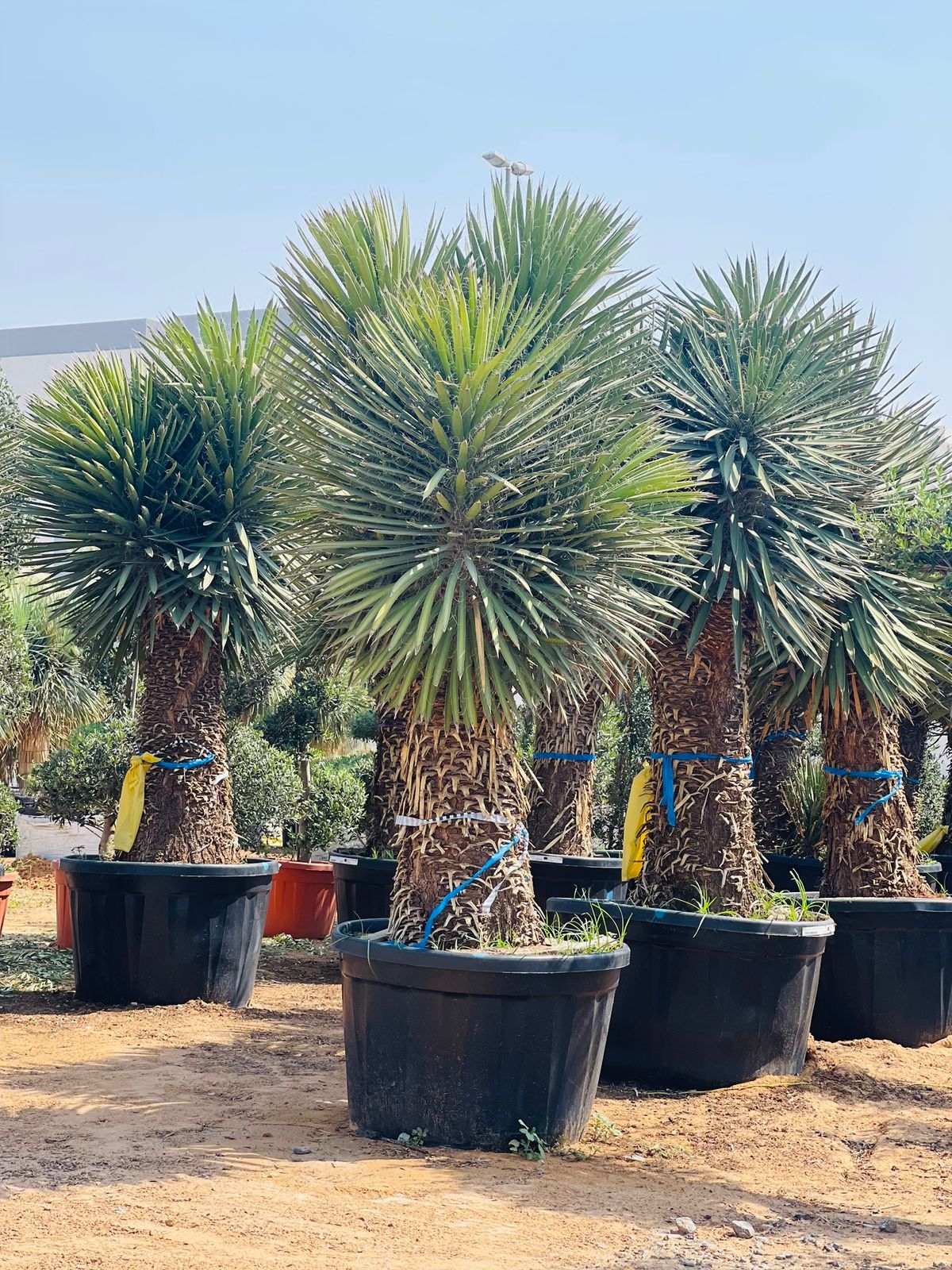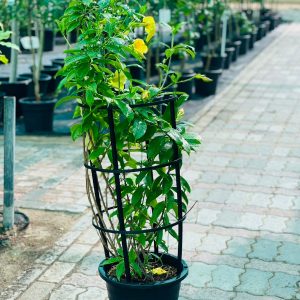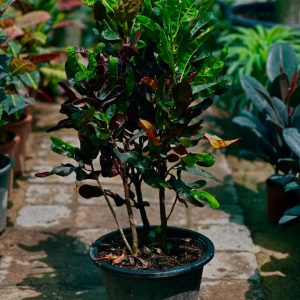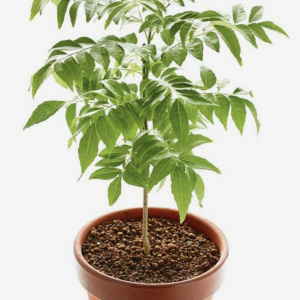Size : 1.8M – 2M
Yucca rostrata, commonly known as Beaked Yucca or Big Bend Yucca, is a visually striking plant native to the Chihuahuan Desert in Texas, New Mexico, and northern Mexico. It is highly valued for its unique appearance and architectural form, making it a popular choice for landscaping in arid and desert regions. Here is a detailed description of Yucca rostrata:
Appearance:
Yucca rostrata is a slow-growing succulent that forms a tree-like structure with a single trunk. The trunk is usually tall and straight, reaching heights of up to 15 feet (4.5 meters). The trunk of Yucca rostrata features a rough, grayish-brown bark that flakes off in thin strips, revealing a smooth and lighter-colored surface underneath. At the top of the trunk, a dense cluster of long, narrow leaves emerges. The leaves are rigid, sword-shaped, and bluish-green in color, with sharp tips and margins. They radiate out from the center in a spherical pattern, resembling a large pom-pom or a fountain of foliage.
Care Tips:
Light:
Yucca rostrata thrives in full sun to partial shade. It requires at least 6-8 hours of direct sunlight each day for optimal growth and flowering.
Soil:
Well-draining soil is crucial for Yucca rostrata. It prefers sandy or rocky soil with good drainage. Amend heavy clay soils with organic matter or coarse sand to improve drainage.
Watering:
It is highly drought-tolerant once established. Water deeply but infrequently, allowing the soil to dry out between waterings. Overwatering can lead to root rot and other issues, so it’s important to let the soil dry before watering again.
Pruning:
Minimal pruning is required for Yucca rostrata. Remove any dead or damaged leaves as necessary to maintain the plant’s appearance. Use sharp, clean pruning shears and wear protective gloves due to the sharpness of the leaves.
Frost Protection:
It is relatively cold-hardy and can tolerate temperatures down to around 0°F (-18°C). However, we recommend providing frost protection, such as covering the plant or using mulch, during extreme cold spells, especially for young or newly planted specimens.
Fertilization:
It is a low-maintenance plant and generally does not require regular fertilization. However, you can apply a balanced slow-release fertilizer in spring to provide some nutrients if desired.
Pests and Diseases:
Yucca rostrata is typically resistant to most pests and diseases. However, it can occasionally be affected by scale insects or fungal issues. Monitor the plant regularly and treat any problems promptly with appropriate insecticides or fungicides if necessary.
It is a stunning and hardy plant that can add a touch of architectural beauty to xeriscapes, desert gardens, or other landscape settings. With proper care and maintenance, it will thrive and become a focal point in your outdoor space.






Reviews
There are no reviews yet.